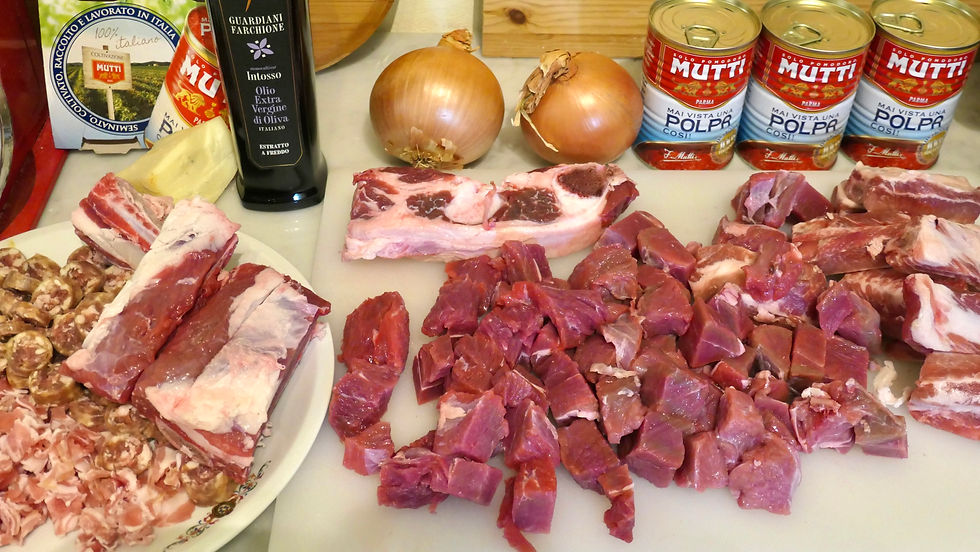Lisa's Arista alla Fiorentina
- Feb 16, 2021
- 3 min read
Updated: Nov 18, 2024
Bone-in pork loin

This dish is steeped in Florentine history and Elena’s mother, being from the nearby Casentino valley, has been cooking Arista alla Fiorentina for longer than she can remember.
Legend has it that the name Arista dates from a banquet in 1439 hosted by Cosimo Medici (the elder) in Florence for cardinals from the Roman and Greek churches. So impressed was one of the Greek cardinals that he exclaimed “àrista” in his own language meaning “excellent” when complementing the host.
Thinking that this was the name for the dish in Greek, the Florentines present adopted arista from that point on as their name for pork loin and the name stuck.
It is still called this today in every butcher’s shop in Tuscany and many other parts of Italy. We can’t promise you that this is the exact recipe from Cosimo’s banquet but it’s the way that Lisa was taught do do it almost 75 years ago and the way she has been preparing it ever since, and that’s tradition enough.
As with many meat dishes in Italy, arista is usually cooked in a high-sided stockpot or dutch oven directly on the stovetop rather than roasted in the oven as is more typical in the UK or US. The Italians refer to this as in tegame and they like to use stone covered cookware which is basically forged aluminium with a ceramic or mineral coated non-stick interior like those made by Ballarini or Moneta.

Ingredients for 4 people:
1.25 kilos (2.75 lbs) bone-in pork loin
4 thin slices of pancetta (unsmoked bacon could be substituted in a pinch or if you only have normal smoked bacon then boil it for one or two minutes to get rid of most of the smokiness)
1 or 2 rosemary twigs
2 cloves garlic
½ glass white wine
extra virgin Italian olive oil
sea salt and freshly ground black pepper
Directions:
1. Remove the arista from the fridge 30 minutes prior to cooking.
2. Season with salt and pepper on each side then lay the pancetta slices across the top (see photo), add the rosemary twig(s) and then truss the whole thing with butcher’s twine to keep everything in place as you rotate it.
3. Generously oil (at least a centimeter deep) a stockpot and add two cloves of garlic in camicia (skin-on so they don’t burn) and for about 5-7 minutes brown the meat well on all sides on a medium high heat.
4. When the meat is nicely browned all over make sure the pancetta slices are now on top and add the white wine carefully as it will spit when it hits the hot oil. After a couple of minutes turn the heat down to a simmer and cover the pan with a lid. You can add a little stock at this point but it should remain perfectly moist without it.
5. Cook for a further 45 minutes or so until the internal temperature reaches 150 degrees F. (65 degrees C). Discard the garlic at any time if it starts to brown.
6. Allow the meat to rest for 10 minutes prior to carving and cover the sliced meat with the juices from the pan when serving. Italians don’t tend to make an actual gravy but this achieves the same result.






